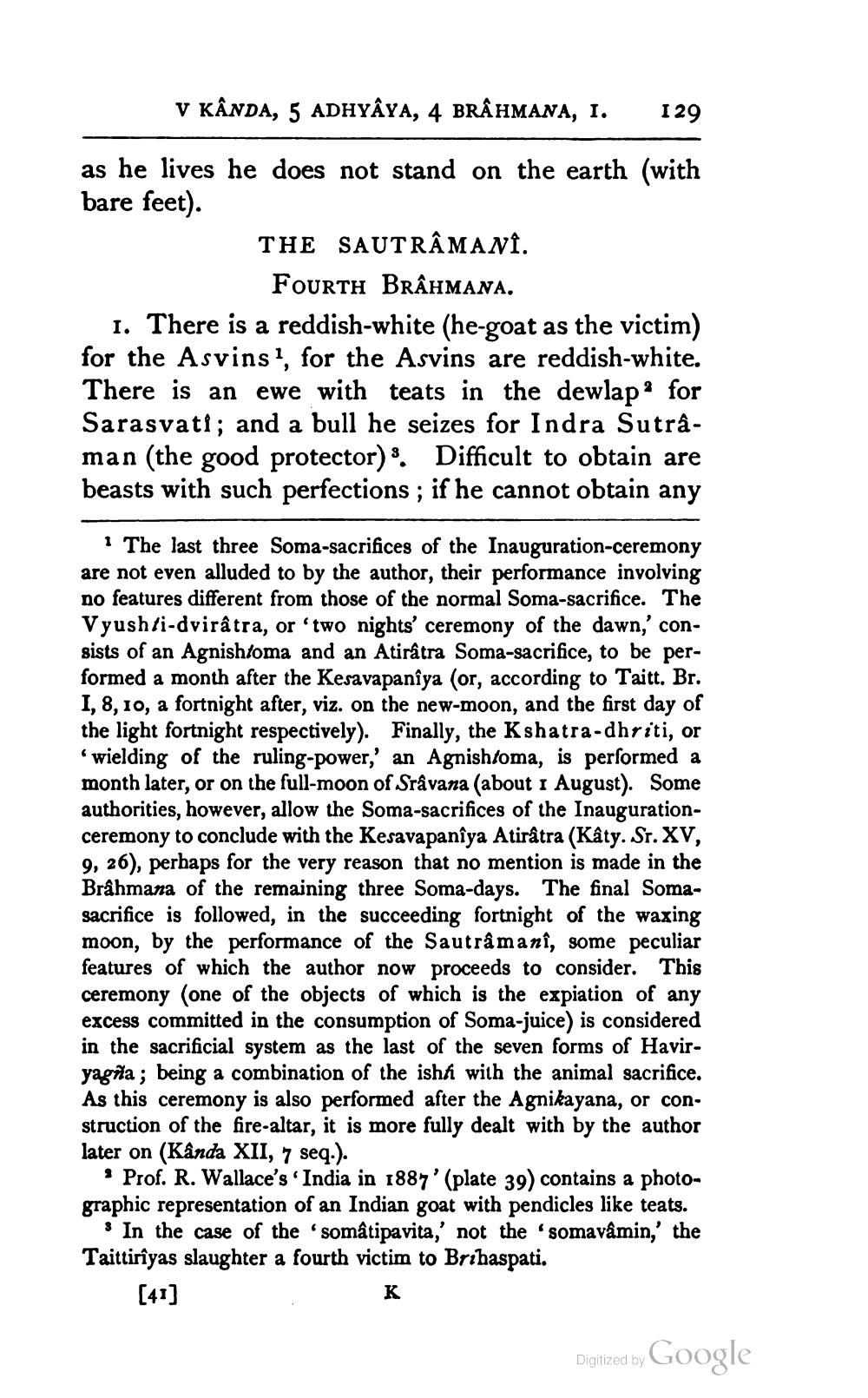________________
V KÂNDA, 5 ADHYAYA, 4 BRÂHMANA, I.
129
as he lives he does not stand on the earth (with bare feet).
THE SAUTRÂMANÍ.
FOURTH BRÂHMANA. 1. There is a reddish-white (he-goat as the victim) for the Asvins, for the Asvins are reddish-white. There is an ewe with teats in the dewlap? for Sarasvati; and a bull he seizes for Indra Sutraman (the good protector) S. Difficult to obtain are beasts with such perfections ; if he cannot obtain any
The last three Soma-sacrifices of the Inauguration-ceremony are not even alluded to by the author, their performance involving no features different from those of the normal Soma-sacrifice. The Vyushti-dvirâtra, or 'two nights' ceremony of the dawn,' consists of an Agnishloma and an Atirâtra Soma-sacrifice, to be performed a month after the Kesavapanîya (or, according to Taitt. Br. I, 8, 10, a fortnight after, viz. on the new-moon, and the first day of the light fortnight respectively). Finally, the Kshatra-dhriti, or
wielding of the ruling-power,' an Agnishtoma, is performed a month later, or on the full-moon of Sravana (about 1 August). Som authorities, however, allow the Soma-sacrifices of the Inaugurationceremony to conclude with the Kesavapanîya Atirâtra (Kâty. Sr. XV, 9, 26), perhaps for the very reason that no mention is made in the Brahmana of the remaining three Soma-days. The final Somasacrifice is followed, in the succeeding fortnight of the waxing moon, by the performance of the Sautrâmanî, some peculiar features of which the author now proceeds to consider. This ceremony (one of the objects of which is the expiation of any excess committed in the consumption of Soma-juice) is considered in the sacrificial system as the last of the seven forms of Haviryagna; being a combination of the ishh with the animal sacrifice. As this ceremony is also performed after the Agnikayana, or construction of the fire-altar, it is more fully dealt with by the author later on (Kanda XII, 7 seq.).
* Prof. R. Wallace's 'India in 1887' (plate 39) contains a photographic representation of an Indian goat with pendicles like teats.
* In the case of the somâtipavita,' not the 'somavâmin,' the Taittirîyas slaughter a fourth victim to Brihaspati.
[41]
Digitized by Google




